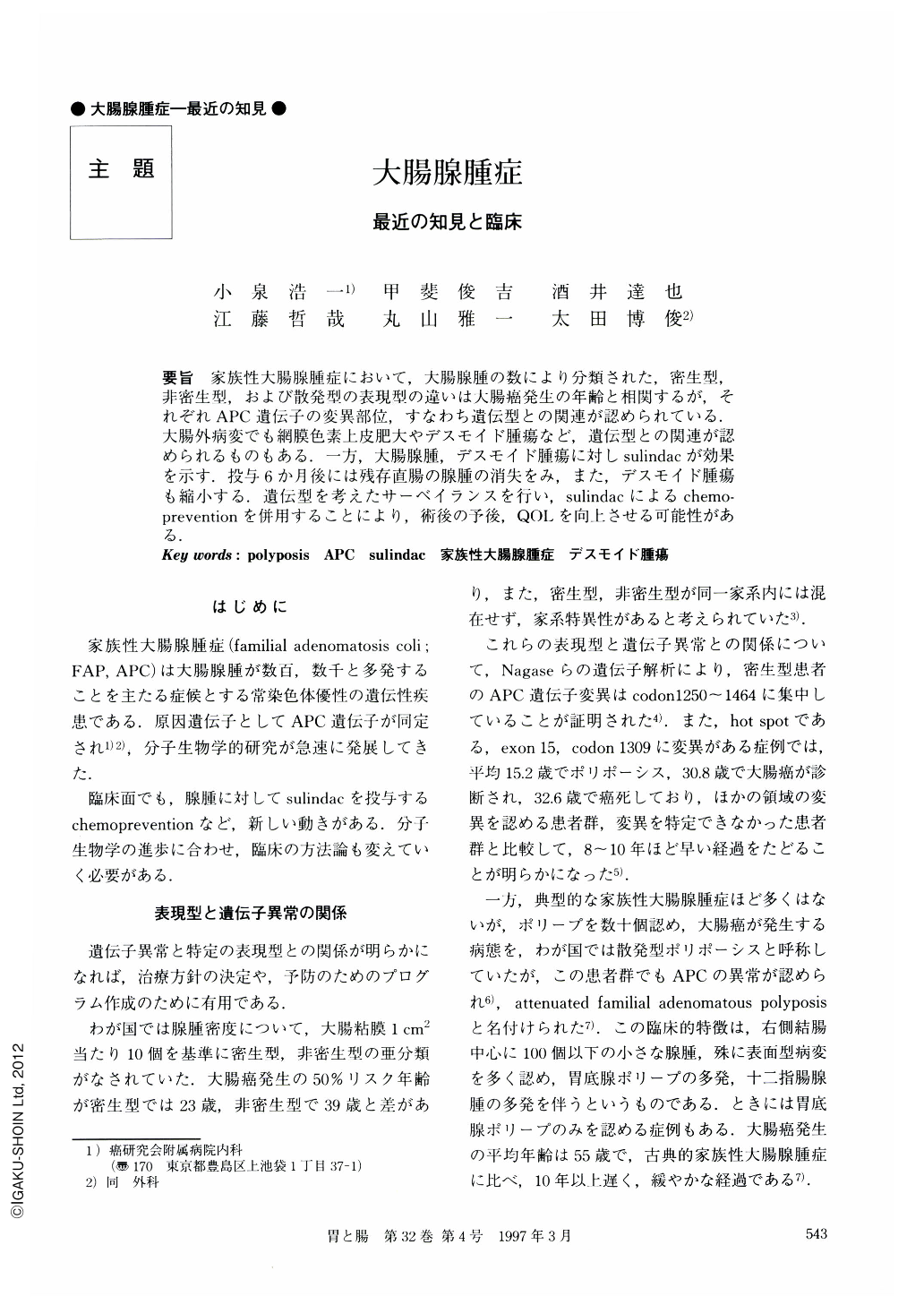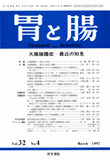Japanese
English
- 有料閲覧
- Abstract 文献概要
- 1ページ目 Look Inside
- サイト内被引用 Cited by
要旨 家族性大腸腺腫症において,大腸腺腫の数により分類された,密生型,非密生型,および散発型の表現型の違いは大腸癌発生の年齢と相関するが,それぞれAPC遺伝子の変異部位,すなわち遺伝型との関連が認められている.大腸外病変でも網膜色素上皮肥大やデスモイド腫瘍など,遺伝型との関連が認められるものもある.一方,大腸腺腫,デスモイド腫瘍に対しsulindacが効果を示す.投与6か月後には残存直腸の腺腫の消失をみ,また,デスモイド腫瘍も縮小する.遺伝型を考えたサーベイランスを行い,sulindacによるchemopreventionを併用することにより,術後の予後,QOLを向上させる可能性がある.
According to the number of colorectal adenomas, familial adenomatous polyposis is classified under three phenotypes; profuse type, sparse type and attenuated type. The mean age of diagnosed polyposis, cancer and of death differs depending on which type is present. Each phenotype has a relationship with a certain mutation on the APC gene. Some of the extra colonic manifestations, such as desmoid tumor and hypertrophy of the retinal pigment epithelium also have a certain relationship with a specific mutation.
Sulindac induces regression of colorectal adenomas. The number and size of adenomas were reduced after 6 months administration of sulindac. Desmoid tumor is also reduced by sulindac therapy.
Both genotype-phenotype correlation and sulindac chemoprevention are important for managing patients so that they wont develop desmoid tumor and tumor of the residual rectum.

Copyright © 1997, Igaku-Shoin Ltd. All rights reserved.


